Last month while at the ANT+ Symposium I had the chance to poke at and go for a run with a new running mechanics sensor that’s looking to hit the market next year. The sensor, called Motion Scribe, is the same size as your existing footpod – except now they’ve packed in both ANT+ and Bluetooth Smart connectivity, as well as additional sensors to give more data around position.
But the real interesting data comes post-run, with detailed plots of everything from whether you heel-strike or not, or how much pronation you have. Before we get into all of that (and the associated meaning of it), let’s get through some basics first.
A look at the pod, installation, de-installation:
As you can see above, the unit affixes to the back of your running shoe. It does this using moldable silicone, which needs to harden for about 6-9 hours before you head out and go for a run. This same silicone is used in other applications from automotive repair to cooking molds.
In my case the ScribeLabs folks grabbed my running shoes just after I landed in Calgary, and then returned them the next day with the unit installed.
For installation, you’ll be using the included moldable silicone. From there you essentially mold a small plot of land on the back of your heel to then push the pod holder into. The footpod then snaps into place just like any other footpod does. I didn’t have any issues during our trail run with the unit falling off.
The exact location isn’t super-critical (i.e. doesn’t have to be within 1-2mm of a specific spot), though the best locations tend to be where the surface is reasonably flat but with grooves and/or other dimples where the silicone can get and make a firm grip on things.
The one area I was concerned about was how easy it would be to rip the unit off the back of your shoe if you removed your shoes like I often do: Using the heel of one to hold down the other.
Despite my best attempts to remember not to do that, I did it twice on accident. Thankfully, neither time resulted in the pod being ripped off the back of my shoe.
Looking at the pod itself, it’s virtually identical in size to an existing/standard ANT+ running footpod. Below you can see the Suunto branded one hanging out next to the Scribe unit. Both units utilize the same easily found CR2032 coin cell batteries. The ScribeLabs folks expect that the unit will get about 40 hours of battery life in running mode.
When it comes time to remove the pod mount from the shoe (for example, when it’s time to retire that pair of shoes) it’s really as simple as prying it off. Or at least, that’s what we thought.
Turns out the back of my shoes have an exceedingly good surface for the moldable silicone to adhere to.
In our case we found a nice sharp little pebble nearby to slowly peal away the unit from the shoe. Normally you’d just have a flat blade screwdriver or so around, but we made due with some nature-made tools.
As you can see, the whole pod comes right off as a single piece. You can see how it leaves almost no trace behind (and I’ve since cleaned out the tiny bit more of silicone that’s down lower on the heel).
And, here’s the front view:
They’re still playing around with the exact procedures and recommendations for installation and removal, but based on what I saw it’s pretty straight forward.
Usage while running:
With the installation complete, it was time to head out for a run. The unit collects data at a rate upwards of 100 times per second in “Research Mode”, storing that within its 32MB internal memory.
From a running standpoint it’s really as simple as just going out and running. There isn’t any start button – rather, it’s just keeping track of the runs and saving files off as required. If you stop for a while, it’ll save the file. If you start, it’ll create a new file. Though, that’s likely to change a bit down the road, based on what I’ll describe in the following paragraphs.
The unit has a few modes for usage, with them being fairly open on which methods(s) will be used at launch. Here’s the run down:
Method One – Data Collection, then post-run transfer via ANT+ to computer/phone:
In this mode the unit will capture data from your run, while running. It keeps that data on the pod in memory and creates separate files for each run automatically.
At the completion of the run you upload your data via either an ANT+ enabled app (iPhone/Android platforms with ANT+ adapter or internal phone capabilities), or, you transfer it to your computer via an ANT+ USB stick and small app there.
From there the data is then uploaded to the Scribe platform. That platform generates metrics from the run (see last section). Or, it could also upload it to sites that support these metrics. This transfer would happen in a standard .FIT file that any application/platform/site could consume.
ScribeLabs has talked with Strava a bit about this, and I think that’d be a great direction to go in. It’d also add a bit of a unique service for Strava as far as running dynamics go, and also might lure some runners back from the service who felt that some of the changes over the past year on the running site have simplified things a bit too much. Ultimately, Strava running users are probably amongst the most tech savvy folks out there.
Method Two – Data Collection and transfer via Bluetooth Smart:
This mode is similar to Method One, where Scribe is recording the run in local memory.
However, instead of using an ANT+ connection, this mode makes use of its onboard Bluetooth Smart radio to upload the run data through an app on any compatible BT Smart device.
Method Three – Data Collection and live streaming to ANT+ watches:
This method is a bit of a wildcard, and will depend a bit on whether or not other companies want to both put together as well as adopt an ANT+ standard around the metrics. Today, the unit could easily send simple ANT+ cadence to any ANT+ capable unit (i.e. a Garmin watch). However, beyond simple cadence the watches out there on the market today wouldn’t understand the extra metrics that are sent (such as angles and speeds). That’s because there exists no standards for sending that information (called an ANT+ Device Profile). ScribeLabs is happy to work to get that done, but realistically they’d need a watch company to commit to offering those metrics in their units.
Funny enough, Garmin came along a few weeks earlier and announced their FR620 with the HRM-Run heart rate strap. The HRM-Run measures what Garmin calls “Running Dynamics”, which has some overlap in certain areas as Scribe. Since they measure in different places, they each have items the other can’t measure, or doesn’t measure as well.
The challenge is that Garmin is keeping the Running Dynamics ANT transmission private for the time being. Meaning that even if Scribe wanted to send the same metrics, it couldn’t – since it’s not open ANT+. Garmin’s reasoning is that it offers it a competitive advantage over other companies. That’s true to an extent, but I think it’s not really an either/or question – rather, one that would open up more research opportunities and ‘synergies’ (to use a lame marketing buzzword) between the two companies.
Ideally Garmin would work within the ANT+ framework to come up with a device profile that satisfies all parties (like how it’s done for power meters), and then support that. We’ve seen how this game plays out before, and it’s clear that long-term having an open framework is far better than a closed one.
Post-Run Metrics:
Now comes the fun stuff – all the data!
It should probably be pointed out that how this data is ultimately presented to users in a product will vary quite a bit from what you see below. These are all from my Moose Runaround.
Let’s dive into the graphs and then I’ll explain some of the non-graph things. First up is a plot showing pitch versus roll. This is a density plot showing data from the entire run.
Pitch is whether the shoe is pointed up or down, illustrated below by the little shoes on the graph (and the horizontal axis). Whereas roll shows how your foot rolls right vs left throughout the stride (similar to pronation and supination).
Each of the clustered dots represents a key position within the ‘cycle’ of a stride. You can for example see the foot strike, the toe off, and the pitch min (nearest my butt), and the pitch max (furthest forward my shoe goes). Now remember, you’re viewing what is effectively a 3D plot of my foot’s motion.
The red dots actually trace the ‘route’ my foot takes within each stride. The little black arrows were added to help illustrate things. When you think of a complete cycle, start with your foot all the way back (left side with yellow dots above). Then, it swings forward up to pitch max (without touching the ground), which is the very furthest and highest the foot will go in front of you. Now it starts to swing back under you and you have the initial foot strike (orange dots). As my foot strikes I roll through to max pronation (blue dots) on my way to toe off (purple dots) where my foot finally leaves the ground again.
Each shade of blue represents a range of pitch vs roll values with the lighter shades representing a higher occurrence than the darker shades of grey. There are three light areas in the above plot that represent foot orientations that occur frequently in the running cycle. The largest one near the center represents when the foot is in contact with the ground. The two smaller areas at either end of the plot represent when the foot is changing direction near the beginning and end of the swing phase.
Now, it’ll take a few times reading through the above paragraphs to probably have it all make sense. Ideally I’d have a video corresponding to the graph to show you, but I lack such things at the moment.
What does this mean in more simple terms? Well, first off I’m not a heel-striker, and I don’t have tons of pronation. My leg swings out a little bit more though on the return path (from back to front), which is ironically something that was noticed on my run as one of the ScribeLabs folks ran behind me. The data supports that above where you see the roll angle hits about -30* on that path.
Compare this for example to another plot by a different runner a week earlier:
The histograms below represent the distribution of the data for the collected metrics over the course of the entire 4.1 mile run. The tallest and lightest color bar represents the most frequently occurring value range during the run. Similarly, the shorter, darker bars represent value ranges that occur less frequently.
Next we’ll look at few other quick plots from my run. Below you see stride rate against Ground Contact Time, and then Stride Rate vs Peak G’s. It comes as no surprise that as my stride rate increases, my contact time decreases. And on the Stride Rate side, as my stride rate increases (typically when I run faster), then my peak G’s also increase.
Now, some of you may have noticed that the above terms also have some overlap with the new HRM-Run metrics from the Garmin FR620. Specifically: Ground Contact Time. Stride rate has always been there via footpod. In the case of Garmin, they can’t get Peak G’s, because of the fact that they’re measuring at the chest. And on the flip side, Scribe can’t get whole body Vertical Oscillation because they’re measuring at the foot versus the chest. This is a perfect example of where if both companies agreed upon a standard they could fill in the gaps of each other.
If you look at how Garmin displays their data (Garmin’s own HRM-Run device data), it doesn’t do the same type of correlation. It’s presenting each metric a bit more singularly.
Last but not least, here’s a look at tiny slice of the data from a simple 2D graph standpoint. What you see on the upper plot is the full foot cycle with the pitch shown. Each vertical orange line indicates when my footstrike occurs, whereas each vertical purple line indicates my toe-off.
The roll is displayed in a similar manner below that, with the same components of the stride cycle.
Next Steps
So, with all this data, what does it mean, and who’s it targeted at? And when can you actually buy the little thing?
Well, it’s a complex question. Very similar to data in power meters around left/right and power balance, there’s simply not a ton of concrete research and training guidance here. Widespread data collection devices simply haven’t been available until now to do that sort of research. Lab testing has inherent limitations compared to outside and real-world testing.
The biggest impacts they’re seeing is that different shoes and different orthotics have clear impacts on the data from just a single runner. This likely comes as no surprise to anyone who’s tested running shoes and had someone watch them on a treadmill. But the potential to quantify that might lead to more accurate shoe to person matching.
Second, they’re seeing trends with injured vs non-injured runners, or people coming back from injury. This was interestingly one of the few areas on the power meter side where left/right power balance can be an interesting metric to watch.
And finally, they’re noticing shifts between pre-season and end of season in metrics such as contact time and stride rate. Again, no surprise, but quantifying it is interesting. And with what’ll likely be widespread adoption of the metrics coming out of the Garmin FR620 data, this fits into that same general category.
Right now they’re targeting shipping in volume in April, with a focus on higher end and elite athletes (as well as just athletes who are interested in the science of it all). Their goal is to give much more clear visualization tools and apps to make the data easier to understand – and then determine how to make it actionable. As part of that they believe they can develop toolsets that can see shifts in time and potentially predict injury based on undesirable changes to the data being collected. For example they can very clearly identify shoe wear over time.
Ultimately, I think the data is pretty fascinating and I’m looking forward to seeing the visualization aspects simplified and become more actionable. I think bringing on partners in both the device and software industry should help them do that – as well as ensuring that those partners can help drive standards around the data collection.
As always, thanks for reading!
FOUND THIS POST USEFUL? SUPPORT THE SITE!
Hopefully, you found this post useful. The website is really a labor of love, so please consider becoming a DC RAINMAKER Supporter. This gets you an ad-free experience, and access to our (mostly) bi-monthly behind-the-scenes video series of “Shed Talkin’”.
Support DCRainMaker - Shop on Amazon
Otherwise, perhaps consider using the below link if shopping on Amazon. As an Amazon Associate, I earn from qualifying purchases. It doesn’t cost you anything extra, but your purchases help support this website a lot. It could simply be buying toilet paper, or this pizza oven we use and love.

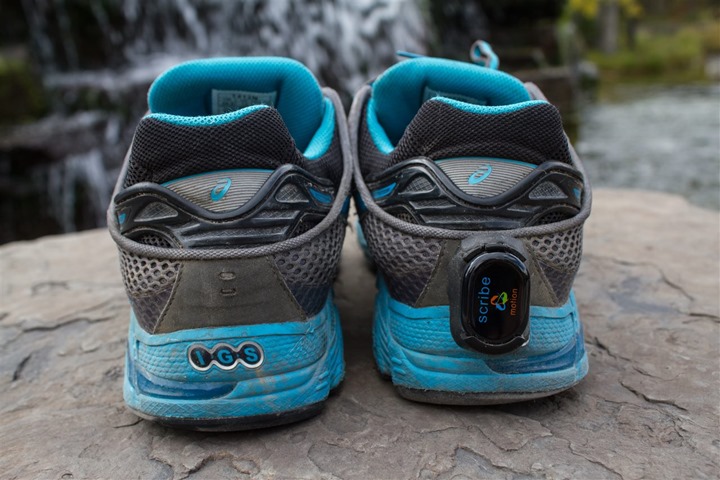



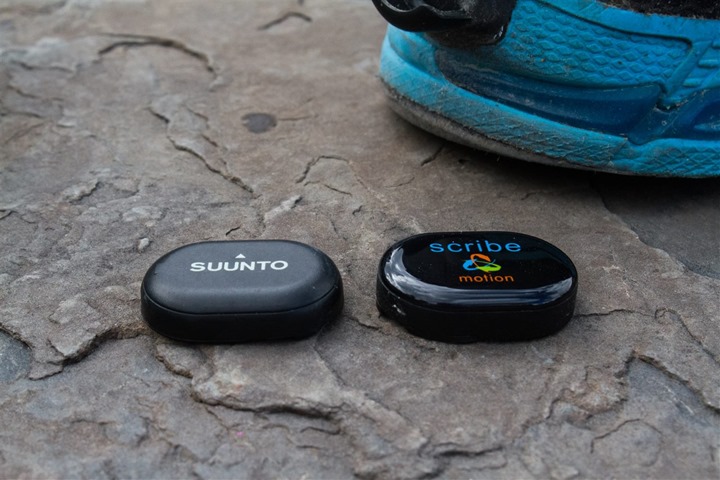
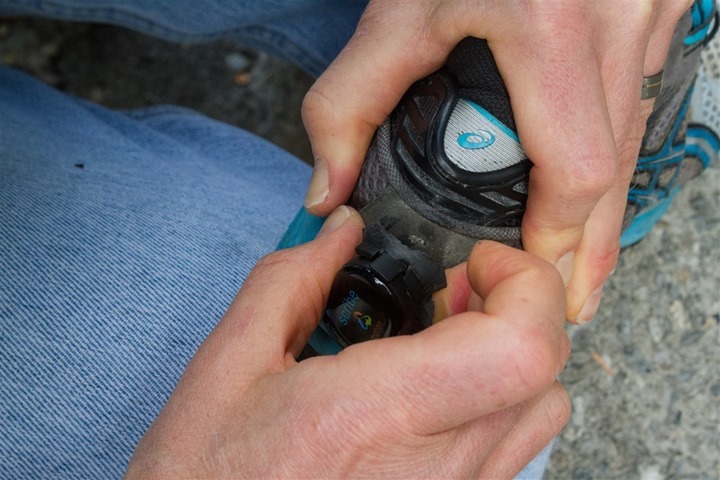
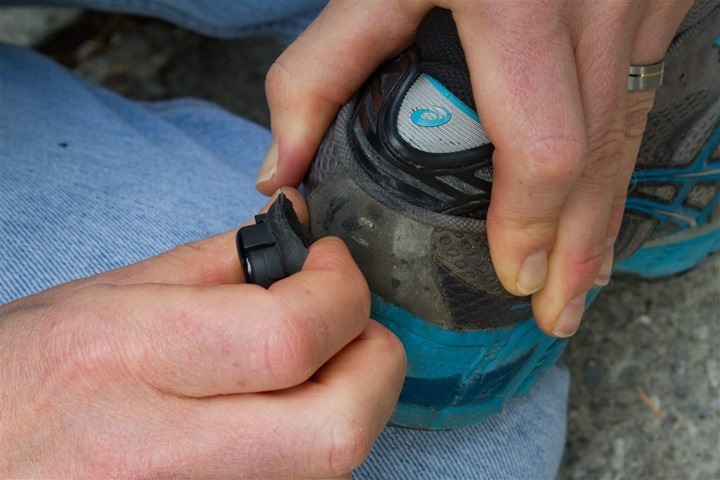

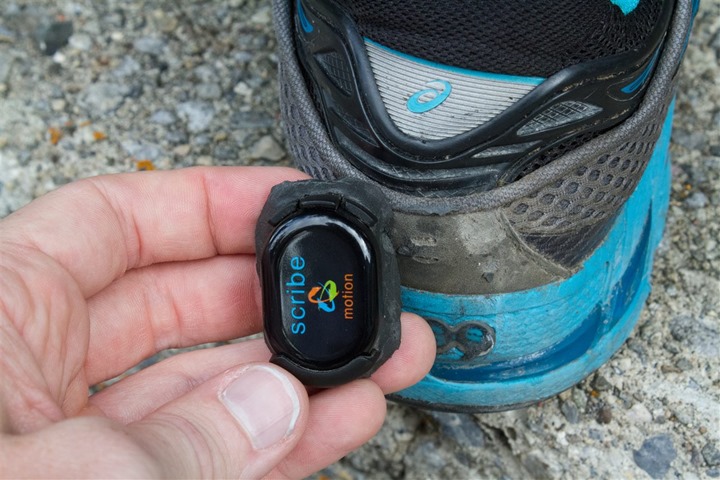

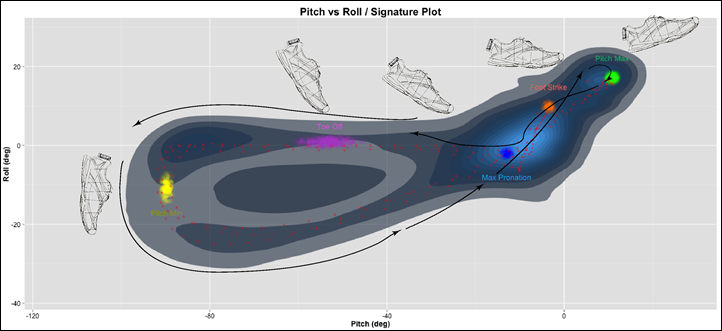
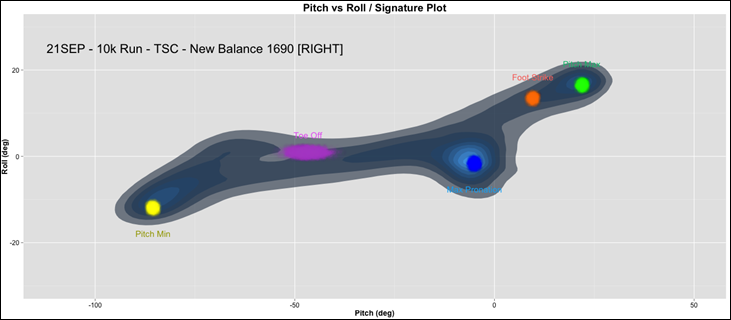
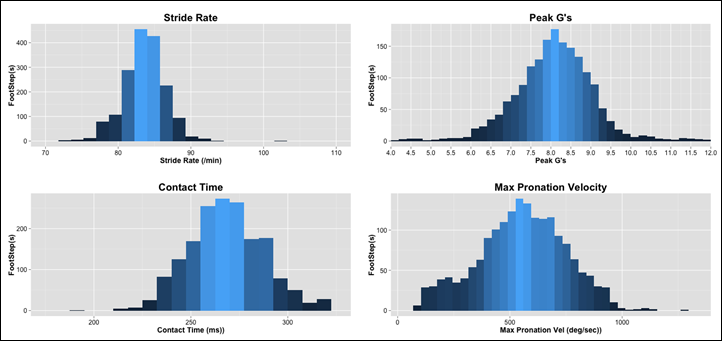




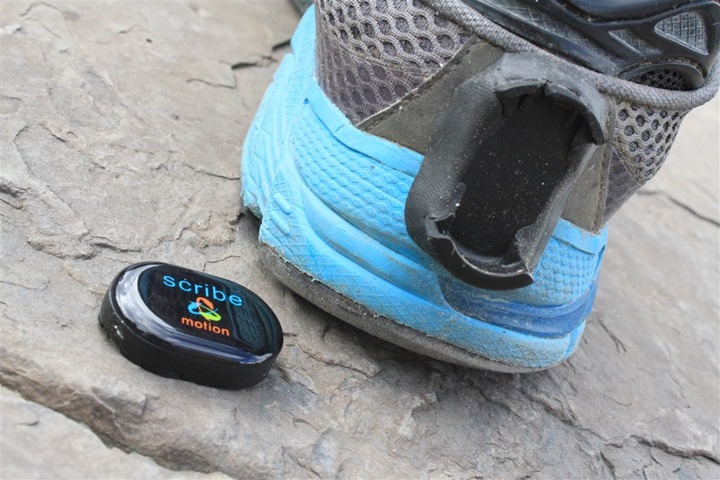


















Sounds like a cool product (if a little niched to the tech geeks like me out there). Are they also considering data collection and live streaming via Bluetooth Smart or are there technical limitations preventing this? How long will 32MB of memory last if collecting and transferring post-run (not sure how 32MB relates to time).
It would be great to see this data get incorporated into watches in the future, although besides cadence I am not sure how much of the data is useful mid-run. Seems to really be a post-run analysis tool primarily.
I assume the price will show a premium to a standard foot pod but hopefully it will not end up being more expensive than my watch!
Hi Tommy,
Thanks for your comments/questions.
We do plan to support Bluetooth Smart at launch.
Scribe would record the computed run metrics in it’s 32MB memory (which
is sufficient to store about 50hrs of runs in ‘Running Mode’). Then transfer
the data over Bluetooth Smart via an app on your phone to our server.
Cheers,
-Tim
Say you have a garmin fr210 and this footpod. This footpod could pair to the watch as a normal ant+ footpod which would give the 210 cadence data. At the end of the exercise you would have a FIT file from the watch that contains the GPS data, heart rate and cadence data along with the data file directly from this footpod which has the cadence data and much more. Both of these recordings are time based so it should be relatively easy to line up the events that happened in one file with the events that happened in another. That way you don’t have to pick either data from watch or data from footpod as you’ll have a merged data file.
Why require the footpod to be on the back of the shoe? I understand you need to measure pitch and roll, but seems like you could calibrate the sensor when placed on the laces to what zero degree pitch and roll is even if the sensor is at an angle.
If the idea is to track what the foot is doing so you can change how your foot works wouldn’t it be better to have one on each foot? Do they have plans for that? (I have a ripped ligament in my left foot so I know my feet work different and this type of thing could track its healing in a limited degree)
Can Sensoria do any of these metrics? I guess they have the limit that their accelerometer is at the ankle so they can’t tell foot angle well but can measure roll better when weight is on your foot I would think. (can tell based on pressure if your roll is loading one side more then the other even if your foot isn’t physically rolled much)
Hi Eli,
All good questions.
Yes, you should be able collect both sets of data independently as you describe but would certainly be easier if Garmin used a standard ANT+ profile for running. That way everything would be in one .fit file.
In regard to where the Motion Scribe is located, we get much better and repeatable data when it is mounted on a relatively rigid surface such as the heel rather than the laces. We are experimenting with using the laces because many runners may prefer that but because of the inherent variability with lace tightness and location it makes it more difficult to get foot strike and toe off data consistently.
A Motion Scribe on each foot would be better and that is certainly an option we will offer.
I’m not that familiar with the sensoria product so I can’t really respond to this question. I will say that it is tough to infer kinematics such as pronation and supination from pressure data alone.
Thanks,
John
I agree its best of the garmin units could receive all the data directly from your footpods and so only one FIT file is ever needed to be looked at. But I was assuming even if Garmin isn’t cooperative you could still have one FIT file that has everything by merging the FIT file from the watch with the one from your footpods. (the hard part is getting them in sync correctly, but like I said I think it wouldn’t be too hard to figure out how they line up)
Sensoria is this: link to indiegogo.com
I don’t think their product can measure pronation and supination as well as yours but can give data to show which side of the foot is doing more load bearing.
the pod has to be on the back of the foot so it can sense vertical I image. I think that between the two a running power meter could be fine at least roughly
As a PT working with runners, I am also interested in comparing limbs bilaterally. Please advise regarding plans.
I want one!
I suspect that any market for this would want to switch the recording unit across pairs of shoes, I’d be interested in seeing how the metrics change (and also left to right foot if only 1 unit supplied). I guess you’d need to have a multipack of mounts and gloop. I normally use 4 different pairs at least a week.
I second this post. I assume the silicone might be kinda pricey, but the plastic clip has to, in volume, cost maybe $0.02 at most? You should just ship it with a 10 pack of backs. Many of us rotate a ton of shoes during the week. Would also allow for putting one on the back of the L and R, and go do some track intervals and compare the two feet (if you haven’t purchased two of them).
Just from a pure curiosity standpoint, why do you rotate so many shoes during the week? I could perhaps see 2 pairs, but unclear beyond that.
I’ll answer the rotation question. As a trail runner who does roads and speed work, Tuesday might be kinvaras for an hour on the roads. then wed and Thursday on trails with my Asics gel Fuji racers. Friday speed work: always fun in the 4oz wave universes. Sat four hour long run; either back in the Asics, or maybe the new balances. Sunday 3 hours, but off trail up a stream bed, then bush wracking through the woods. Definitely monorail mtn massochists.
All great shoes. AND, with two pairs each, so that I rotate them that way too. Keep one pair worn just a bit but fresh for races. The other for daily training.
Agreed on multiple shoes. One week: MT110s on trail, Saucony Levitas on 10 mile recoveries, Saucony A5s on track and tempo days, NB 1600s on 16+ mile runs, Universe 4s for a 5K or 10K. And still take a rest day. Just gives the feet variety of cushion and flex. They get tired of the same thing if I’m in the 70+ range.
I training 2 times a day with different pair of shoes .I use 6 different pairs of shoes a week.
Sounds like a cool product but not for me;-)
Greetings
Interesting product for sure.
Looking forward to seeing this one in the shops. I am an extremely over-pronating runner (Asics foundation forte series shoes) and am trying to work on changing my running style to accomodata for my pronation – ie not just flap my foot arround, but rather find a biomechanical motion that ‘feels’ better and more stable, with the hopes that I can get more distance out of my ankles by doing that. But to quantify that change – you need to measure it. Someone running behind you and shouting stuff will not be as accurate as this over the long (and even short) run! Still not entirely clear on how the metrics translate to running motion, but the software and some experience in linking your motion to the output will do that I assume. Will be interesting to see how much a runner can really adapt his style, or if the biomechanics stay the same while he just thinks he is running differently… It could be a great step forward in the Digital Self of runners – probably similar to the advent of GPS watches!
Now to get Garmin to support these metrics, smashrun to incorporate them in their website and get Scribe Labs to sell these things in pairs for left and right (with multiple mounts for 2 pairs of shoes) at a reasonable price. In case Scribe Labs are looking for european testers, my feet volunteer!
And some free hints:
– make sure you get some white or clear silicone molding out there as well, not all shoes wear black well ;-)
– love to see a way to link these data to my garmin running data – spontaneous start/stop looks iffy for that unless one figures out a way to mesh the data using time stamps or something…
I would love this. Changing my running stride (mostly by moving to 4mm drop skechers shoes) changed my life and I still have a way to go to improve. I am hoping the 620 can give me some metrics to do so an certainly this pod seems to be able and help.
I would think with software you can use one pod and switch between feet between feet and get a good comparison without the cost of two pods.
Is this available for purchase now?
@JohnL
Is your sensor also able to measure along 3rd axis (“yaw”) ?
My right leg is 9mm shorter then left one, which over years, my body was compensating by rotating left foot counterclockwise along “yaw” axis for the foot strike. That of course led to some injuries – manly shin splints in left leg. I am using orthosis (shoe insert) for the last couple years and can see that my strike is slowly changing. Would be really interesting to be able to measure this, and also see, if different type of shoes or orthosis would give better results.
Marcin
Marcin,
Yes, Motion Scribe can measure yaw and we are playing with that data now.
It would be very interesting measure these changes over time with your evolving use of different shoes and orthotics. That is one of the real powers of the Motion Scribe, measuring small changes over time.
Thanks,
John
Seems like most of the questions I had have been answered but as has been pointed out by the other comments this is really and truly a footpad aimed at the serious runner and most serious runners have multiple pairs of shoes on the go at once.
Realistically for this to be a viable product beyond the technology of it it needs either come supplied with probably half a dozen mount kits or for the kits to be so cheap and readily available that a tiny bit extra every time you buy a new pair of shoes is not an issue.
We are planning to launch with a Motion Scribe ‘Kit’ – which includes 2 Scribes (pods) and 5 mounts.
As you’ve guessed – the pods are flexible – and can be mix/matched in varying configurations :
– Simultaneous Right + Left
– Right Only
– Left Only
You’ll be able to re-configure a pod using a Scribe Motion App.
We’re trying to capture all your questions and get them into an FAQ – should be up later today.
You’ll be able to find that on our website –
We are planning to launch with a Motion Scribe ‘Kit’ – which includes 2 Scribes (pods) and 5 mounts.
As you’ve guessed – the pods are flexible – and can be mix/matched in varying configurations :
– Simultaneous Right + Left
– Right Only
– Left Only
You’ll be able to re-configure a pod using a Scribe Motion App.
We’re trying to capture all your questions and get them into an FAQ – should be up later today.
Tim C- 5 mounts is not enough. Try 10-12. Can’t cost more than an extra buck. The mount cost is in the noise, so just include a ton of them please…
At least by supplying 5 they realise the issue though. Ultimately no matter how many you supply it with it will never be enough for some the best you can do is supply it with a reasonable amount and then make extras very easy to get hold of and cheap. Either that or a removable mount but I would guess it is difficult to sort that out fitting it to an area of the shoe that doesn’t flex such as the heel unlike normal lace mounted pods
Just for clarity – in case we’re not talking apples-n-apples – the mounts can be readily removed and reused. We’ve discovered that the ideal removal tool is a guitar pick – and will be including a few
Scribe Labs branded picks in the kit.
You’ll obviously need to use a new packet of silicone (which will be available in a number of different colors).
But for those who literally want to rotate Scribe through a multitude of shoes per week – we’re listening !
Can the mount survive a washer and dryer?
“heal-striker” ?????
He who has healing powers and strikes with it at will.
Fixed. ;)
How much does the mounting position/angle impact the data? If it is skewed a couple degrees one direction on one pair of shoes compared to another, will that impact the data?
Any ball park on cost of the unit? $100? $500?
I’ll definitely be getting one.
Good device, in theory. I could really learn from this. I thought I have been really good at trying to not be a heel striker recently and I did a New-Leaf test recently and the tech said right off the bat “really a heel striker, eh?”…
There seems to be so much variability from left to right in runners that the two pack makes a lot of sense.
It seems there will definitely be a market for a quick mount version of this that running shops could stock that would be easily mounted to shoes for customers to make a data-driven shoe purchase. Something quick to mount and analyze. That would make me a loyal shopper in the store even if owned this device at home.
For home use, that twin pack has to be a decent price. Less than a low-moderate GPS watch.
Great work. Exciting product.
What type of data could you get from mounting them on your knees and tracking the sideward motion during, would this help with orthotics to reduce injuries? Could they be used on bikes for motion tracking too?
….I wonder if this could be applied to arch collapse and knee position on a cyclist while pedalling. I guess the sensors would have to be attached to the knees since the soles on the shoes don’t move. Maybe somebody is already doing this with gyros, accelerometers?
Scribe Labs. Great idea. Count me in; I am interested in two sets one for me and one for my wife.
When you are ready, we’ll be ready. I’ll star getting a bit price sensitive around $119-$129 per set as an early adopter. If there is or will be some advanced motion/gait analysis software i’ll be less price sensitive.
Thanks. Looking forward to you guys bringing it to market.
Hi Ray
I see that your right Asics is used on the exterior while your left one is normal.
I had the same problem. I saw a podologue. Result : right leg 19mm shorter than the other.
Have you ever considered the same?
That is the kind of metrics I am looking for, both for me and my wife to help solve nagging annoyances during our runs. Like a few others, price will be a determining factor. In any case, will be following updates on this.
My wife has MS (relatively benign) but has some stride issues that seem to show up after 5-6 miles. Her goal is to do her first (and will be my only – and only to support her) marathon in the next year when she turns 40. If there were some kind of real time monitoring with simple audio feedback when the sensor notices a change from “normal” to “abnormal,” that could be a terrific tool for avoiding injury.
I don’t know what I mean by “normal” or “abnormal” for her stride, but she has to be very careful about when her technique breaks down on a run. Seems to me this little gadget could work wonders at letting her know when that may be starting to happen.
I could envision some type of audio feedback, at which time she/we walk for a bit to recover, rather than keep running until she/we notice a problem with her gait. Experience tells us that by the time we notice it, it’s too late and we need to really cut back or she’s heading for pain. And when that happens a few runs over a couple weeks, she’s heading for injury and time off from running. It can start a very mentally difficult cycle of injury/recovery with little long term gain.
It’s always her left side, so learning how her two sides differ could be very helpful also.
I’d love to talk her into being some kind of tester for the Scribe Labs people in that area.
Tim,
There have been attempts at the sort of feedback device you mention but as far I know only in a lab setting. As you say, determining “normal” can be very difficult if not impossible. Also, many other factors besides fatigue will impact someones normal gait patterns. Things like speed, running uphill or downhill, or even the camber of road can influence foot strike mechanics. I agree that this would be a very cool implementation of this technology but perhaps best done in partnership with an academic research institution or medical/physical therapy group after we’ve launched Scribe next year.
One other thought about training for your marathon next year is that if you are fairly certain the gait or stride patterns begin to change between 5 or 6 miles of running, perhaps it is worth taking a short walk break every 4 miles or so to try and ward off the fatigue related changes.
Thanks for your interest and best of luck with marathon,
John
As a barefoot runner these metrics would be very interesting, but like so many options a little difficult to mount.
I have my cadence sensor around my ankle in a chip band for triathletes, but hardly an option in this case.
Intersting product though.
Neat product. Would be interested to see what specialty shoe stores would do with this information.
The Scribe pod looks a bit thicker than the Garmin ones. Could this fit in the sole of a Nikeplus shoe? Would the data be good?
Nike+ shoes only have one hole in their shoe for a pod so would limit you to only one foot being measured
Interesting product, the mount is a bit prototype looking but i guess if it works then its not a problem. I guess i differ a bit from above posts in that i would only really be using it on one pair, although i rotate shoes i would not be needing to check the data for every single run i do & have a mount for every shoe i own, more it would be something i would check from time to time and then focus on a problem if there is one. I really hope to see more of these types of things on the market at an affordable price.
Very interesting, I also wondered about the lace mounting but given your answer around the movement of the laces, above, it sounds perfectly reasonable. What kind of accuracy do you get with this? Have you had it on a treadmill and compared it with high speed video or similar? It would seem to me that rough uneven terrain or running on a camber might be an issue for the accuracy of the device. Have you seen any of these issues?
I would very much like to see it in action.
Kris,
Thanks for the comments and questions. We will be addressing these questions and others in the weeks and months to come at our website/blog at http://www.scribelabs.net . Feel free to go to the site and sign up for our mailing list and you will be notified when new posts or other info is up.
Thanks,
John
For those that are not a fan of black silicone, the is a product called Sugru that could easily substitute and it comes in a choice of colours- link to sugru.com
You guys are too good! That’s what we use and will, more than likely, ship with the our product.
As a runner that rotates multiple sets of shoes I would be interested in a product that tracks my milage in each pair. Since this system seems to depend on a semi-permanent mount, it would be cool if the pod recognised which mount it is attached to. Then the user can register that mount to a specific set of shoes and the software can measure how many miles on each pair. That information coupled with the system’s ability to monitor when a shoe is worn out would be an excellent tool to figure out the value of a shoe when shopping for replacements.
As a sprinter I am excited to see that there is a product out there willing to measure data faster than 1 time per second. Will you also include all the other interesting foot pod data like speed, accel, etc? I’d love to get a better idea of what my starts look like.
Shane,
We think there are many very interesting applications for the motion scribe in track and field events. Stay tuned to our website (http://www.scribelabs.net) and we will keep you informed about our progress.
Thanks,
John
As a (triathlon)running trainer, I would be very interested to see for all my athletes how their feet are moving (which is sometimes difficult to follow on video). So I would be interested in a “quick mount/dismount” system, where I can test several athletes during a session.
They have these “shoe lights” out now, that mount at the heel of your shoe (wrap around?). Seems to stay in place, so I was envisaging something like that to hold the “pod”.
Would als solve problems for people rotating lots of shoes…..
Not exactly your target market perhaps but it seems line this would be a great product for applications such as soccer. Adidas already produces a number of their soccer shoes (boots if you prefer) with cavities in the insole for their micoach “speed cell” sensors (both left and right foot too). Problem is that the micoach has a closed API. This and similar sports could really leverage the fact that you don’t have to carry a phone or have a watch during a game. Have you given any thought to these types of applications? I realize the analysis of the data would be considerably different but seems like it could be instructive too.
I look forward to this product.
I have a life-long leg length difference, which I finally figured out and partial corrected with a small shim under one innersole as well as bunch of PT to fix up a bunch of asymmetrys in my core muscles.
I would love to have data from both feet to see how balanced (or not) my stride lengths etc are and keep tabs on it.
Is it just me or has it seemed like they have gone dark since November with no updates?
Hi Eli,
Yes, our web presence has gone somewhat dark the last few months. Sorry about that. Not to worry though, we have been in continuous testing and development mode and our timeline is similar to what we stated back in November with a little additional time added for a Kickstarter campaign planned for this spring. We are approaching a significant milestone because we are planning to send some units out to a few select folks (academic and coaching types) soon so they can play with them and the data and give us some feedback. We will definitely provide some updates at our website as that process unfolds.
Thanks again for interest,
John
Thanks for the update. Was the part of your FAQ that said you plan to do a lower volume pilot build
(any early adopters out there?) – in February. That made me think you already did your kickstart and wanted to make sure I didn’t miss it. (mostly since I just started running last november with a ruptured ligament from early in the year and thought it would be good tech to run correctly)
Guess the hard part is in figuring out what to do with the information captured.
The Kickstarter for this product has launched link to kickstarter.com
Yup, cool stuff. Been chatting with them on the side a bit. Great to see!
Thanks for the heads up. Sad there isn’t an early adopter option for getting two (one per foot) Not so much the pricing as its like getting the second unit for $80 but so we can be at the start of the line (notice delivery date) May still get this before the Sensoria socks, wonder which one will give better data
Any knowledge about what changed from when you reviewed it and what they are offering now? Seems like there is no pitch vs roll chart like above.
Hi Eli,
There will still be the option of capturing a Pitch/Roll ‘Signature’ with the runScribe Pro.
We got a lot of feedback on that particular plot – while we felt like it was incredibly valuable – most folk felt incredibly confused interpreting an angle-angle plot. Thus the concept of runScore and an easier way to compare the key metrics that we have really dug into.
Hope that helps answer your question.
Cheers,
-Tim
Any clue if there will be a higher level of integration with Garmin/Garmin Connect? It would be an improvement to be able to see all data analysis in a single place.
Beyond uploading the file, I would think that’d be tough unless Garmin decides to ‘play’. And given that to date Garmin has refused to make the Running Dynamics spec open, I don’t see it happening. Said differently: Garmin seems them as direct competitors (which is silly).
Hey
one of the best devices on kickstarter. I love it. nice post. Saw it these days on a german blog
look
funny :-)
greatings from jimbow
Backed Runscribe on KS yesterday. Can’t wait to try it out! Will there be an updated review in the future? Thanks for all your work and time Ray. Don’t know how you do it all!
Yup, I’ll definitely review/post on it down the road once they have an updated unit for me to try out (in person). It’s cool stuff!
Can this be used to visualize 3d motion in the air, like measuring heel whip?
Looks like great product.
Can anybody tell me ; if I back it on KS will it be send to me now or do I need to wait for some release date ?
Looks like great product.
Can anybody tell me ; if I back it on KS will it be send to me now or do I need to wait for some release date ?
wooops….. just read the KS and delivery dates :)
however,
if i get the 2x pack ; one for me and one for wife , will i be able to set two accounts ?
Looks like it’s been delayed to January :-(
Hi. Does this only pick up running vs walking. Also, how long does activity have to stop for before a new file is created. What I’m thinking, is how do you make sure a warm up is separated from run/race data?
It will not start saving data until you start running but if you walk after it has started it will save that data as well. It currently requires 15 seconds of no motion to stop saving the data.
Thanks
Thanks John. Should be very easy to spilt the warm up from the run/ race.
Will you have a tool for merging runs that are spilt due to stops at traffic lights, etc.
I got an email today from Scribe Labs notifying me that my sensor will ship in the next couple weeks and requesting payment. Anyone else hear the same?
Seems like early bird have started shipping and others will ship soon based on:
link to kickstarter.com
Received this morning. Sadly Achilles has a tender bulge in it. Been testing it a bit though. Even with the latest firmware I can’t get live ANT+ stride profile. Unfortunately my running app doesn’t support BT stride so I don’t know if that is on. Has anyone had more luck?
Although it was stretch target two a look at the website suggests it is not a function of the device.
Didn’t think it was going to deliver live transmission of data at first release, but would allow you to download the computed metrics via BT Smart after a run. Their website talked about live capability being part of a firmware update to the same hardware.
I was looking at their science version (data-logging of the base 9-axis IMU) for a different sort of project, and got the sense that ANT+ is in the hardware, but isn’t being used right now (and not for their lack of interest in ANT+).
I’d like to know if ANT+ is in the shipping commercial product??
If yes then I’d buy it with the hope that someone sees an opportunity to build the real time app. BT is ok but it drains my phone real fast.
Garmin owning Dynastream (the developper of ANT+ ) is detrimental here.
The nice thing about standard is that are lots of them.
I don’t remember the name (wahoo for iphone??) but I remember some non-garmin gadget that could pick up ANT+
This is an area for a creative app developer to go around garmin.
Looks like it is finally shipping to those that backed the kickstarter. Now they just need to release an Android app so I can use it
Can’t wait for this to arrive…
Hi,
Not sure if its too late to get any replies to a post here but I’ll try.
I had an old damage to my left hip while playing rugby, now well healed but as a result my whole left side differ form the right in some effort to compensate, from shoulder to foot. When I do heavy squats for example, I push the left hip forward as i begin to get tired. This also affect my running in that i swing the left foot in an wider arc as well as much heavier pronation. Its aslo affecting my knee when on the bike.
When i now (a bit late) start running more seriously I have been thinking how to correct this so that my increased running won’t result in further injuries.
I wonder if RunScribe might be a good way to measure what effect different exercises, treatments and stretches have on my running?
hi Ray,
i have found this pod in internet almost by chance:
http://www.milestonepod.com
do you know something about it? it costs just 25$. i have been looking the screenshots of the app, and looks pretty cool for the price: mileage, stance, footstrike, cadence, …. it seems to work with BT4
link to play.google.com
for 25$ you cannot go wrong. anyway i wonder why it is not more popular, given the low price.
I live in Germany. i contacted them, because one can only order in USA. but they also sell through amazon which delivers to the whole world.
any thoughts?
Have you tested the new runscribe pods? I’m considering lumo, stryd, milestone, or these.
Not quite yet. We chatted recently about getting a set though. So probably have them soon.
Would be really interested to see a review? I am thinking about Runscribe or similar to try and help monitor improvements in running form but have a feeling it will just be data that’s interesting but that I can’t do much with.
Paul
What are the chances of seeing a comparison chart on the latest offerings from:
lumo, stryd, milestone & run scribe?
Pretty high actually.
I’ve been working on it in Excel the last week or so. Kinda messy because each company sometimes calls the same thing by different names, and then you somewhat have to decide where you draw the line on various things. Meaning – is something a true ‘feature’ that can be differentiated, or is it just a gimmick.
@DCRainMaker – this review of RunScribe is about 10 years old now. RunScribe has changed and evolved a lot during this time, and the new RunScribe Red includes a Sacrum pod.
Any chance you can re-review the latest version of RunScribe and share your thoughts?